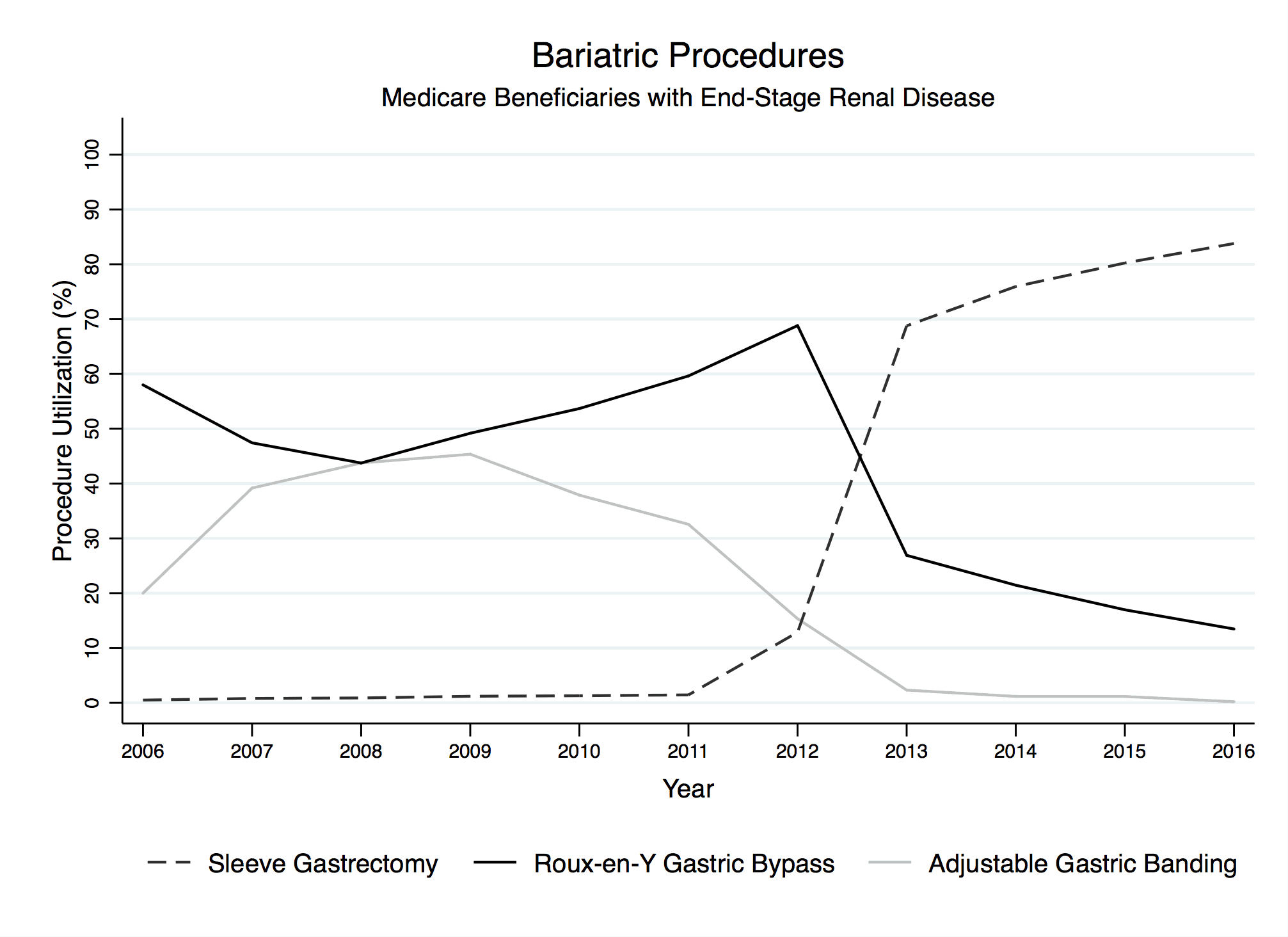National Trends in Bariatric Surgical Practice for Patients with End-Stage Renal Disease
1Department of Surgery, University of Michigan Hospitals and Health System, Ann Arbor, MI, 2Department of Internal Medicine, University of Michigan Hospitals and Health System, Ann Arbor, MI
Meeting: 2019 American Transplant Congress
Abstract number: 291
Keywords: Kidney, Obesity, Renal failure
Session Information
Session Name: Concurrent Session: Surgical Issues: All Organs
Session Type: Concurrent Session
Date: Monday, June 3, 2019
Session Time: 2:30pm-4:00pm
 Presentation Time: 3:06pm-3:18pm
Presentation Time: 3:06pm-3:18pm
Location: Room 208
*Purpose: Despite growing enthusiasm for the use of bariatric surgery in obese patients with end-stage renal disease (ESRD), national practice patterns in this patient population are poorly understood.
*Methods: We used 100% Medicare data to identify all beneficiaries undergoing bariatric surgery in the United States between 2006 and 2016 (N=203,802). We evaluated longitudinal patterns in the use of laparoscopic gastric bypass, sleeve gastrectomy, and adjustable gastric banding procedures for patients with ESRD. We then estimated median length-of-stay, risk-adjusted complication, and reoperation rates for patients with and without ESRD.
*Results: The number of ESRD patients undergoing any bariatric procedure increased 9-fold from 50 in 2006 to 475 in 2016 (N=2,698 total). Surgical practice patterns changed significantly over this period as well. For example, the proportion of ESRD patients undergoing sleeve gastrectomy increased from less than 1% in 2006 to 84% in 2016. (Figure) Outcomes were similar between ESRD patients and other Medicare beneficiaries for all procedures. For sleeve gastrectomy, ESRD patients experienced a complication in 3.6% (95%CI 2.6-4.6%) of cases compared to 3.7% (95%CI 3.5-3.8%) for non-ESRD patients. Complication rates were nearly twice as high for ESRD patients undergoing gastric bypass (7.0%, 95%CI 5.3-8.7%). Reoperation rates following sleeve gastrectomy were also similar between ESRD (0.2%, 95%CI 0.1-0.3%) and non-ESRD patients (0.2%, 95%CI 0.1-0.4%). Both patient populations had a median length of stay of 2 days (IQR 1-5).
*Conclusions: Due in part to a more favorable complication profile, national practice patterns for bariatric surgery in patients with ESRD have shifted dramatically towards sleeve gastrectomy. As the transplant community moves beyond questions of safety and feasibility, transplant centers should create opportunities that improve the longitudinal care of obese patients by facilitating greater access to bariatric surgery.
To cite this abstract in AMA style:
Sheetz KH, Woodside KJ, Shahinian VB, Dimick JB, Waits SA. National Trends in Bariatric Surgical Practice for Patients with End-Stage Renal Disease [abstract]. Am J Transplant. 2019; 19 (suppl 3). https://atcmeetingabstracts.com/abstract/national-trends-in-bariatric-surgical-practice-for-patients-with-end-stage-renal-disease/. Accessed December 11, 2025.« Back to 2019 American Transplant Congress

